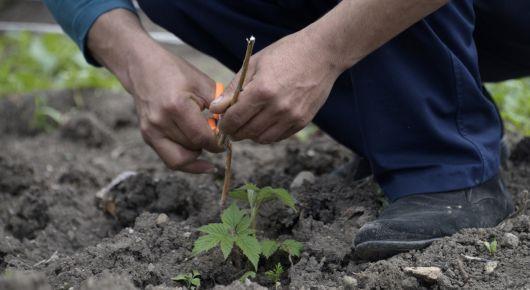“We cannot exploit the soil for decades”

Beatrix Baturin Almásiné is a Hungarian soil engineer, agricultural adviser, special awardee of the 2019 Adviser of the Year by the Hungarian Ministry of Agriculture and Hungarian Agricultural Chamber, and a mother of two. She was interviewed by FAO on soil management, innovation, and women in agriculture on the occasion of World Soil Day (5 December).
You have been part of the assessment of the Hungarian soil landscape. What was it about and its importance?
Hungary has very different soils. The assessment’s goal was to map this and their effect on crop production; to know which crop and what production method are the most suitable and in which areas. We have already reached the top in terms of quality of seeds and pesticides, so we cannot increase production and sustainability through these – our only chance is the soil.
Soil scanners and normalized vegetation index cameras are in use already, although they are not very common or developed. Precision agriculture is spreading, just as are soil conservation methods in viticulture. We cannot exploit soils for decades; we need intelligent thinking to know what is under our feet and what is missing from there. Through examination of the soils, one can learn about the missing ingredients and the exact dose needed to replenish them. We have to pay careful attention to protect plant health as well.
A precise and detailed information on the soils is still lacking, and a strong governmental commitment would be needed to conclude thorough and large-scale soil mapping.
You have referred to innovative approaches. In early August, Hungary became the first European Union member state to adopt an e-agriculture strategy. Where do we stand in terms of digitalization and innovation in agriculture?
Soil scanners are used in small and middle-size farms to define inhomogeneity and for monitoring. Further steps are needed to include a clear framework for drone usage, such as the licensing of chemicals to be allowed for use via drones [the regulation is expected in summer 2020].
I think that we, as advisers, are innovative and make an effort to be up-to-date. It would help us if standardized ways of getting information existed.
Successful implementation of digital agriculture strategy should take into consideration local specificities and leave enough time for a phasing-in period. Farmers should hear many times from many different sources what requirements and opportunities this entails for them.
And what about young farmers and innovation?
The younger generation in agriculture is more open to innovative approaches in general. They can handle digital tools more easily. In Hungary, one can study agricultural informatics. However, older generations don’t want to lag behind and will often hire someone to manage those types of tools for them.
As a female adviser and mother, how do you see the situation and role of women in agriculture?
Agriculture is still a rather male-dominated sector, but a woman’s precise and emphatic attitude is very valuable in many areas, such as advisory services. On farms they are very often responsible for administration, and sometimes involved even in decision-making.
Women are more keen on innovative solutions. As mothers, we have to reconcile several roles that require new approaches. Digitalization is a key tool for time-management and proper work–life balance.
5 December 2019, Budapest, Hungary
